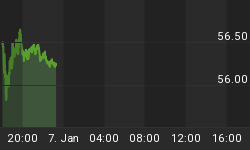Texas Crude Oil Proved Reserves stood @ 4,583 million barrels which accounts for 21 percent of United States Crude Oil proved reserves. Production, according to 2004 data stood @ 1,073 thousand barrels per day, which accounts for 20 percent of U.S. Crude Oil production.
Producing Oil Wells stood @151,653 in 2004; with 506 Rigs in Operation in that same year.
Refineries can distill @ a capacity of 4,627,611 barrels per day (bpd).
Texas is the pivotal player in the U.S. Energy Complex.
The U.S. is increasingly dependent on oil from the Middle East. This dependency has created opportunity for efficient domestic producers. Refiners that can handle high-sulfur 'sour' crude oil, which is generally less expensive than low-sulfur 'light, sweet' crude now have a considerable margin and increasing competitive advantage.
The premium that the market is charging for light sweet crude over heavier, sour ones has increased dramatically. 30 months ago there was a $2.30 spread between sour crude and the benchmark light sweet crude, West Texas Intermediate.
Today the spread is nearly $10, deeply impacting refiners' margins.
To put this bind in perspective, imagine paying a discount to refine asphalt through diesel but a ~340% increase in the spread premium to refine gasoline. Other than Valero, Net Capital Investment in refining capacity has declined for years.
OPEC's volatile up, down, all around output gyrations are increasingly disturbing. The dog claims to hunt, but comes up lame in affecting 'price'.
The Saudi's continue to sound their output cheers as though this will impact the present administration's approval rating.
It's not working and watching our members of Congress propose centrally planned price fixing is entirely disgusting as the gas retailer is going to take the brunt of the public venom once again.
OPEC's promise to raise its output ceiling from X million barrels a day up to Y million barrels a day every 48 hours might have some effect had OPEC not been pumping at peak (net of Iraq who is exempt) of ~ 28.5 million barrels per day.
The primary distillation process 'cracks' a barrel of crude into its disparate oil products: heavy fuel oil and lighter products aka gasoline. Saudi Heavy Crude us refined to ~50%+ heavy fuel oil, ~15% gasoline. The balance is a mélange of naphtha unfriendly to transportation.
Over ~50%+ of the aggregate demand for oil products in the U.S. is for gasoline and naphtha. ~6% is for heavy fuel oil.
The distillates supply ratio is decidedly out of balance when compared to U.S. demand.
I fully expect we will see $4.50 to $6.00 Gasoline and $15.00 to $22.00 Natgas are possible and probable within 30 to 60 days if Rita maintains its present Category 5 Level and makes landfall within 100 miles either side of Galveston, Texas.















